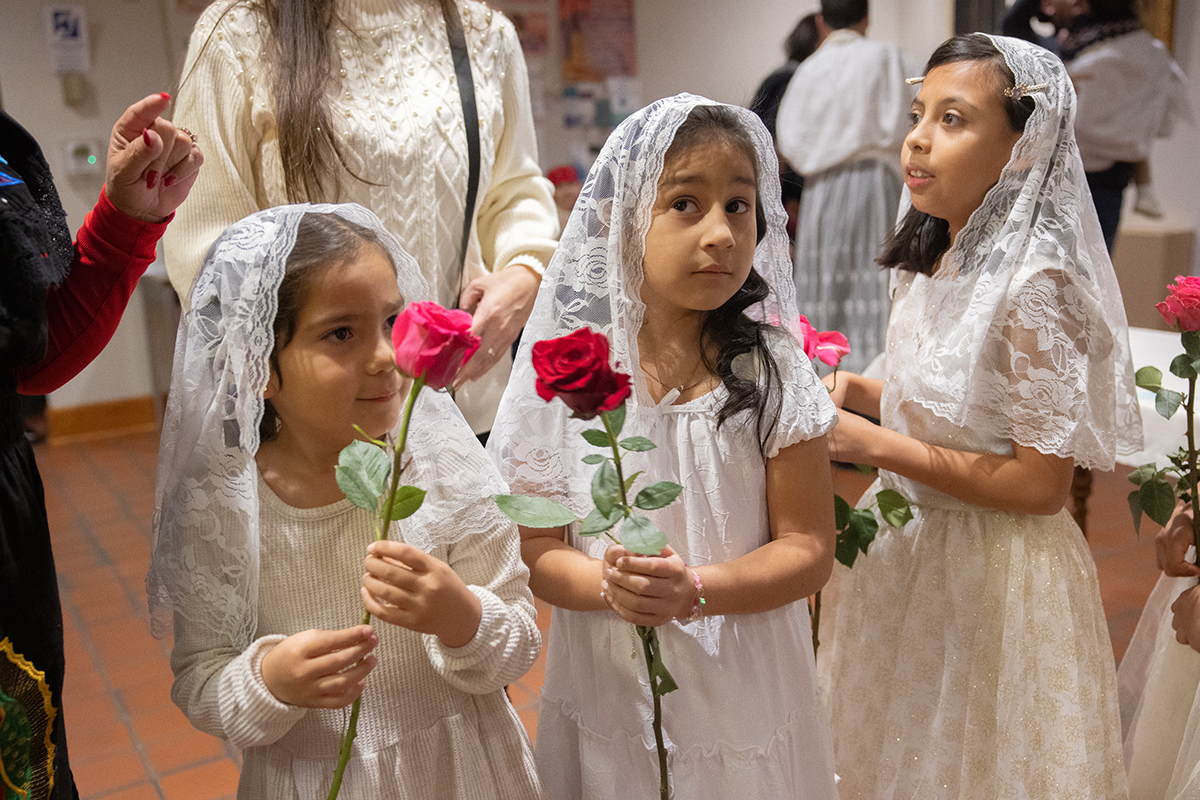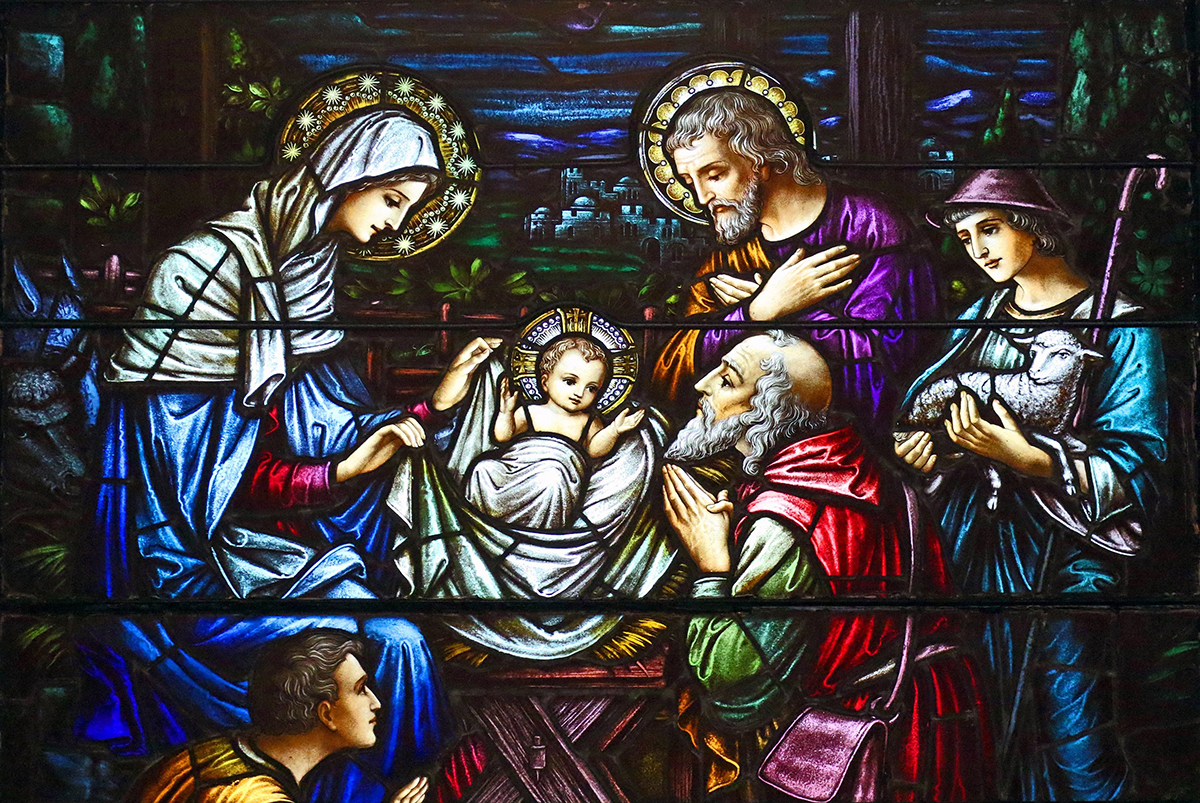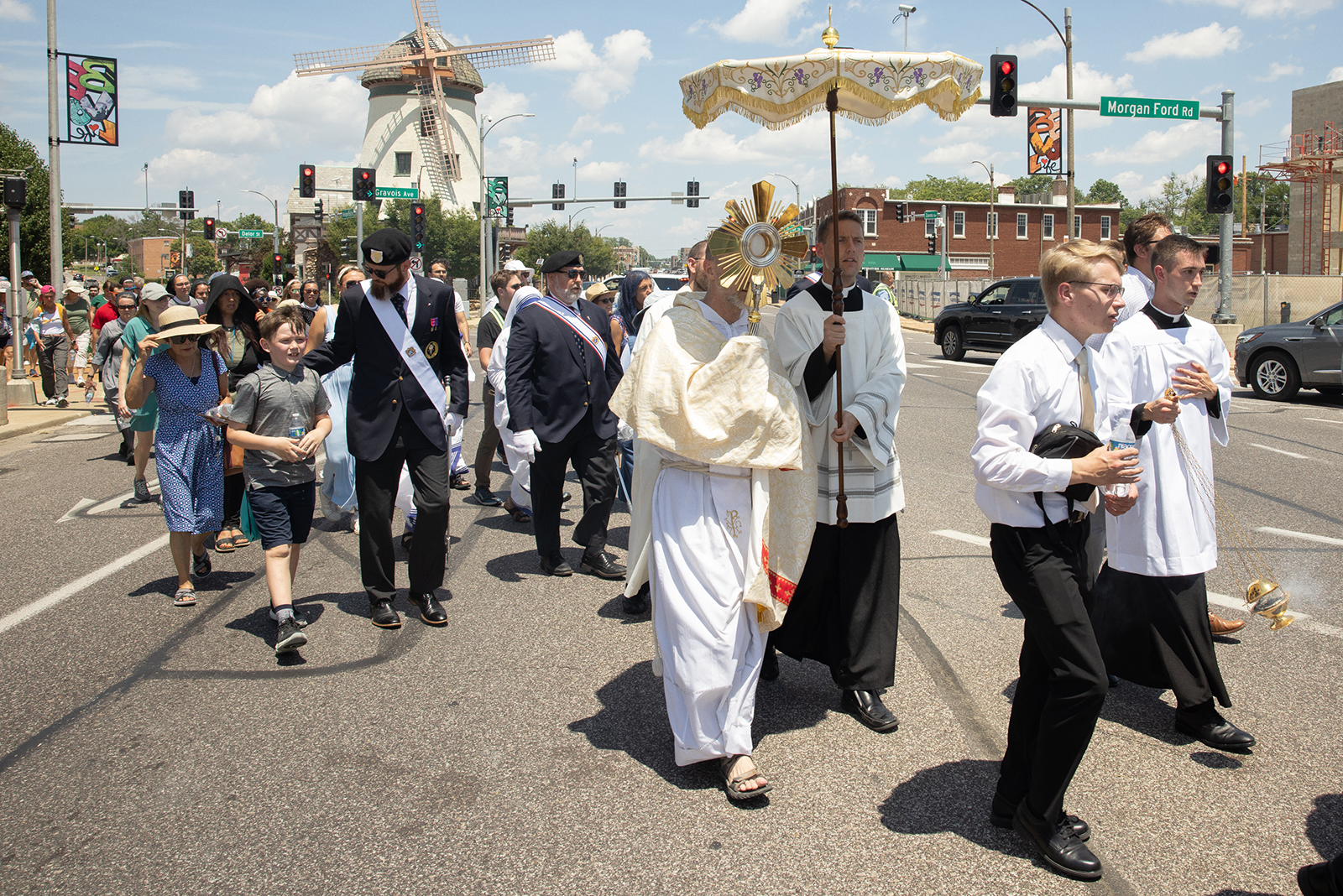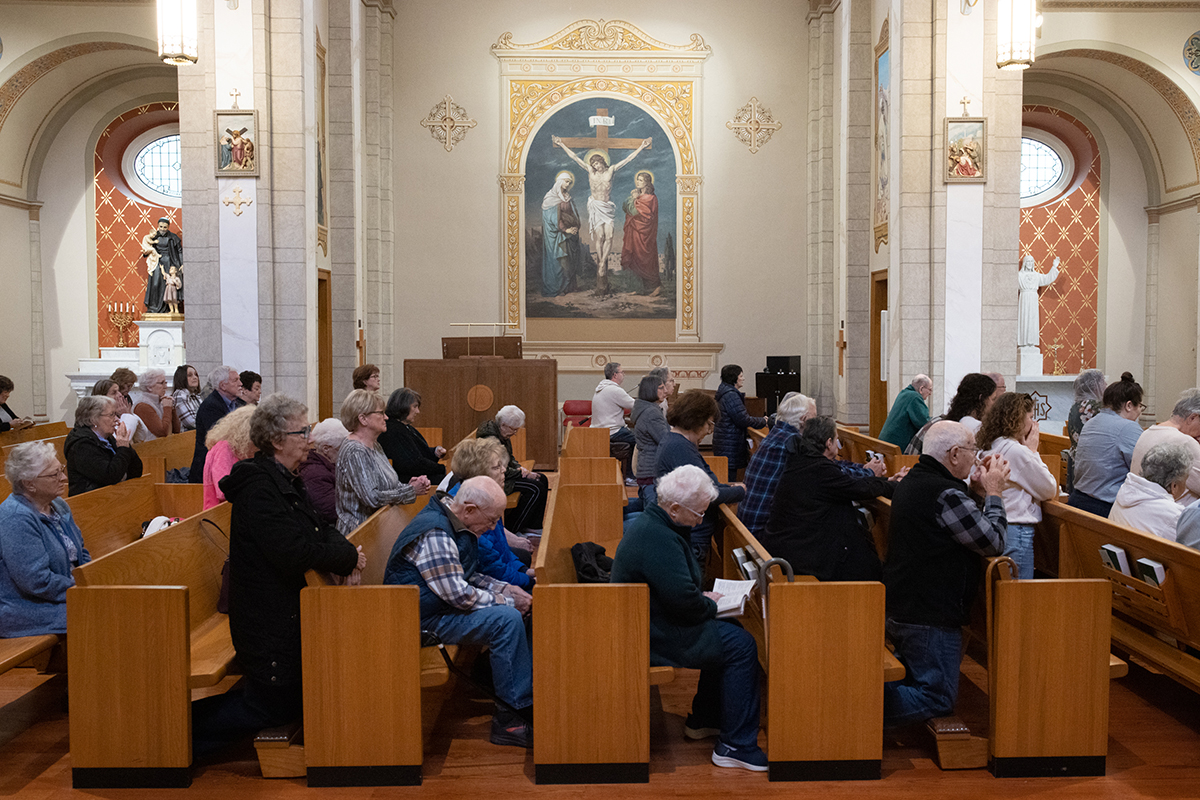American Catholic leading project to replace bell at cathedral in Nagasaki
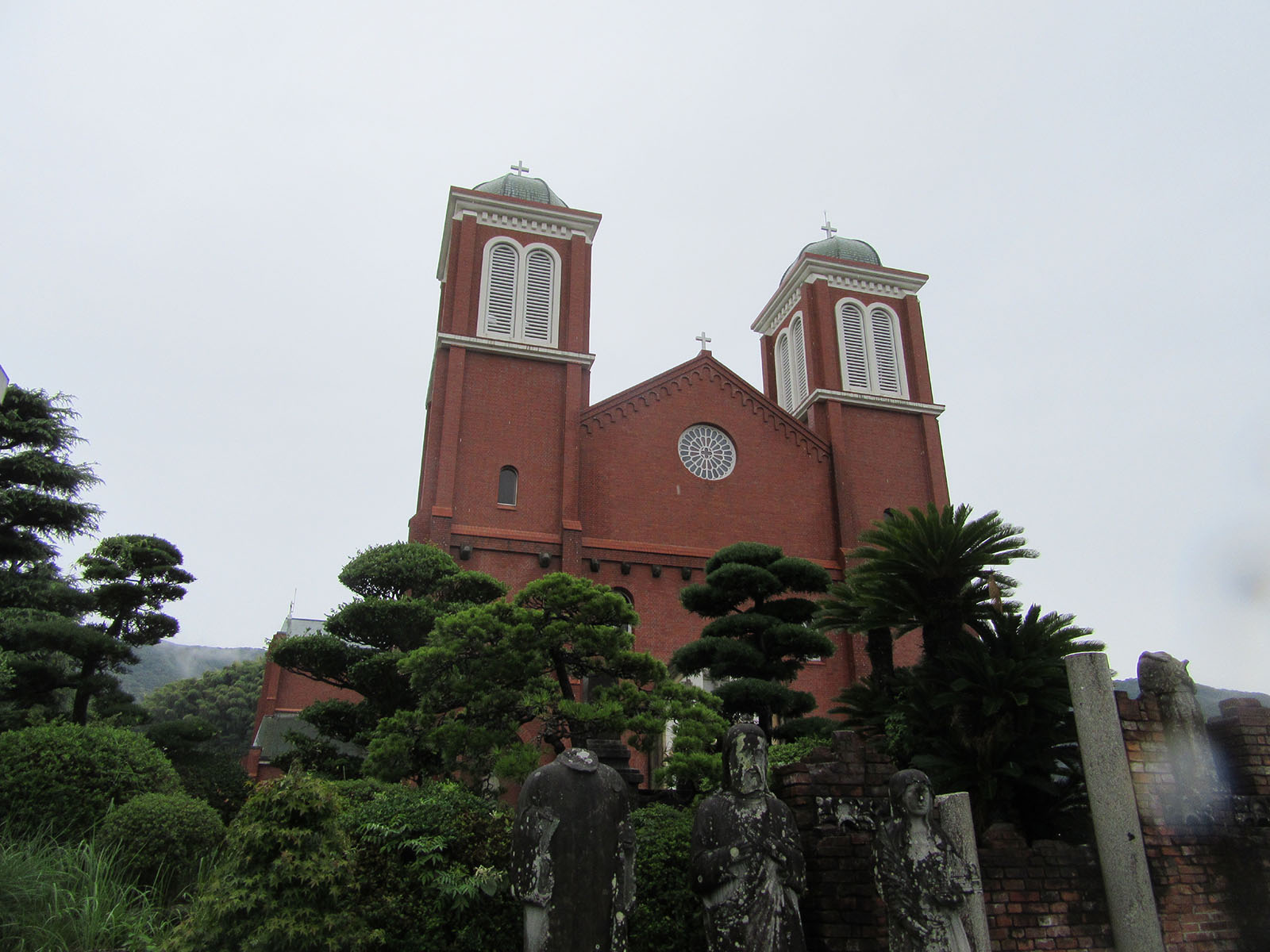
James Nolan Jr. details story of grandfather’s role in Manhattan Project, suffering of Japanese Catholics
A Catholic professor whose grandfather had an important role in the Manhattan Project has spearheaded an effort to replace a bell in the Urakami Cathedral, destroyed by the atomic bombing in Nagasaki, Japan, nearly 80 years ago.
Through discovering his grandfather’s history, James L. Nolan Jr., a sociology professor at Williams College in Williamstown, Massachusetts, said he also learned about the resilience of a Catholic community and the voices of some who viewed the tragedy as an opportunity to share in Christ’s sufferings as they rebuilt their cathedral.
Nolan spoke about the bell project in October at several parishes in the Archdiocese of St. Louis. The project is being funded completely through donations, and the Archdiocese of Nagasaki plans to install the donated bell next year in time for the 80th anniversary of the atomic bombings.
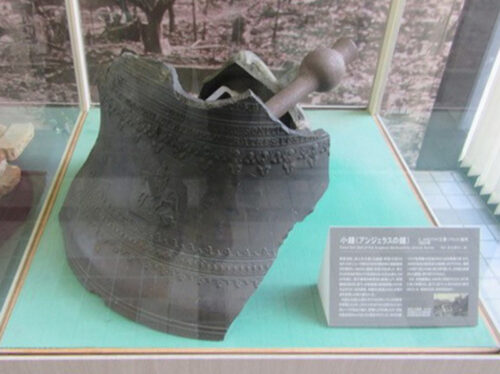
It’s an “expression of our American Catholics’ admiration, respect and gratitude for the incredible example of the Urakami Catholics who throughout history endured unimaginable suffering and yet have remained steadfast in their faith,” Nolan said at a talk Oct. 12 at St. Gianna Parish in Wentzville. “It would be a great honor for us to show our solidarity with the Nagasaki Catholics through this gift.”
The atomic bombings of Hiroshima and Nagasaki in August 1945 killed as many as 250,000 people. In Nagasaki, the Urakami Cathedral was heavily damaged. It was completed in 1925 and was the largest Catholic cathedral in east Asia. It’s estimated that 8,500 of the city’s 12,000 Catholics perished.
Only the cathedral’s walls remained. The twin bell towers were destroyed, but the south tower’s bell was found nearly intact in the ruins; it eventually was restored and placed in the reconstructed bell tower. The bell from the north tower, though, was severely damaged by the bomb, and its remnants are displayed in a nearby museum. The cathedral was rebuilt in 1959, nearly 15 years after the bombing.
After Nolan’s father died about 10 years ago, he received a box of materials from his family containing a treasure trove of information about the role of his grandfather, Dr. James Nolan, in the Manhattan Project. His grandson wrote a book, “Atomic Doctors: Conscience and Complicity at the Dawn of the Nuclear Age,” in 2020 that examined the moral and professional dilemmas faced by doctors and others who participated in the Manhattan Project.
Dr. Nolan, an OB/GYN and radiologist who was trained at Washington University in St. Louis, served as the post surgeon at the Los Alamos, New Mexico, facility where the atomic bomb was developed. He helped coordinate the safety procedures for the Trinity Test (the first test detonation of an atomic bomb), accompanied the “Little Boy” bomb to the Pacific Islands and was one of the first Americans to visit Hiroshima and Nagasaki to assess the damage.
Nolan Jr. has visited Nagasaki several times to interview Japanese Catholics, including descendants of the bombing victims, for a new book he’s writing. During one visit, he met a Urakami Cathedral parishioner who asked what Americans thought about the bomb.
The question caught Nolan off guard. After some conversation, the man suggested: “Wouldn’t it be wonderful if some American Catholics would give as a gift a replacement bell for the left tower?”
Maryland Heights-based McShane Bell Company is overseeing the casting of the bronze bell, which will be 31.5” in diameter and weigh about 750 pounds. It will look much like the original bell, including an inscription in Latin, which states: “I sing to God with a constant ringing in the place where so many Japanese martyrs, with honor, have worshiped and have, by their example, called their brothers and sisters and their descendants to the fellowship of the true faith and of heaven.”
The bell will feature an image of St. Kateri Tekawitha, the first North American Indigenous saint who fled to Canada to the mission of St. Francis Xavier — who led the first Christian mission to Japan.
History of Christianity in Japan
In his research, Nolan Jr. also dove into the history of Christian persecution in Japan, stretching back to the “hidden Christians” of the 16th century and the 26 holy martyrs of Japan. “This history still informs the faith of the people today,” he said. “It’s part of their collective consciences, a part of their collective memory.”
He also learned about Dr. Takashi Nagai, a prominent radiologist at Nagasaki Medical College and a convert to the Catholic faith, who interacted with his grandfather as part of a joint commission formed to examine the effects of the bombing. Nagai’s conversion came in part through a connection with a medical school roommate who was a descendant of the “hidden Christians,” a reference to the Christians of that time who practiced their faith underground as a result of the government’s persecution of Catholics.
When the atomic bomb hit Nagasaki, it was reported that several dozen Catholics were in line for confession at Urakami Cathedral in preparation for the feast of the Assumption. Nagai suffered injuries from the blast, including trauma to his head and radiation exposure. Despite his injuries, he mobilized a group of people to set up a mission to help others who were injured.
Shortly after, a Mass was held at the site of the ruined cathedral to pray for all of those who died. The bishop asked Nagai to give a talk on behalf of the laity.
He noted the history of Christian persecution in Japan and a connection between the destruction of Nagasaki and the announcement of Japan’s surrender, which was announced on Aug. 15 — the feast of the Assumption.
Nagai believed that “Urakami Catholics who died had been a sacrifice of atonement for the sin of war” and that Urakami was “chosen as a pure lamb, slaughtered and burned,” Nolan Jr. said. He referred to it as a “great Holocaust” and urged his fellow mourners to look for the beauty, purity and sacredness amidst the tragedy.
“He urged his fellow Catholics to look to Christ, who shouldered the cross up the hill to Calvary,” Nolan Jr. said. “In other words, by looking to the cross, they could find strength and find deep meaning in their sufferings, and they were given the opportunity to share in Christ’s sufferings.”
The reactions to Nagai’s message were mixed, but he never backed off, Nolan Jr. said. “He continued to maintain that this was the proper way to think about how they should respond to the bomb, to see it as an opportunity to share in Christ’s suffering.”
“Hidden Catholics” of Japan
In 16th century Japan, missionaries converted as many as 300,000 Catholics. But by the end of the century, the Japanese government increasingly saw Catholicism as a threat and began persecuting Catholics. Christianity was banned, and those Japanese who refused to abandon their faith were killed. A group of 26 Japanese Catholics — known as the Holy Martyrs of Japan — were executed by crucifixion on Feb. 5, 1597, at Nagasaki. It wasn’t until Christian missionaries returned to Japan 250 years later (St. Maximilian Kolbe among them) that a community of “hidden Catholics” practicing their faith underground was discovered.
Nagasaki bell project
To learn more about the bell project at the Urakami Cathedral in Nagasaki or to make a donation, visit stkateriinstitute.org/ nagasaki-bell-project/
Subscribe to Read All St. Louis Review Stories
All readers receive 5 stories to read free per month. After that, readers will need to be logged in.
If you are currently receive the St. Louis Review at your home or office, please send your name and address (and subscriber id if you know it) to subscriptions@stlouisreview.com to get your login information.
If you are not currently a subscriber to the St. Louis Review, please contact subscriptions@stlouisreview.com for information on how to subscribe.

